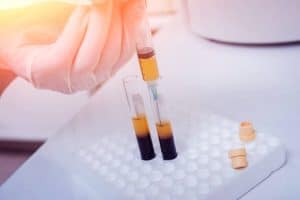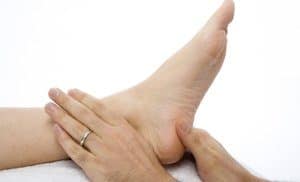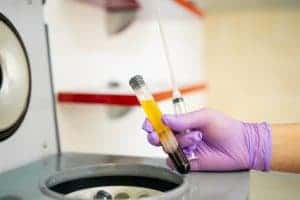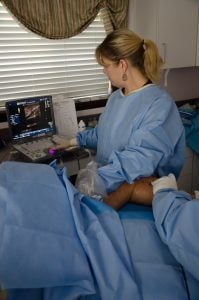PRP for Plantar Fasciitis

PRP for Plantar Fasciitis

As with any medical intervention there’s no guarantee that stem cell therapy or Platelet Rich Plasma PRP for Plantar Fasciitis injections will work. Yet there’s a good chance that they can help, often greatly, and in many cases complete relief is possible. More importantly however, these therapies cannot make the condition worse or harm the patient in any other way.
This is why many newer podiatrists near me are viewing regenerative treatments as standard of care for several common conditions. Overuse injuries will always be a major part of podiatric care. After all, those of us who are able to walk, run, and participate in sports put tremendous strain on the feet and ankles. In the larger picture It’s a very common-sense fit. As professionals, podiatrists have always fought to (literally) keep their patients on their feet by avoiding surgery whenever possible.
Plantar fasciitis:

The pain of plantar fasciitis can be excruciating. It’s typically worse in the morning, leading many patients to dread taking that first weight-bearing step. Symptoms typically lessen throughout the day yet are worsened by activity.
The surgery and its drawbacks:
Plantar fascia surgery almost always involves physically cutting a portion of the tendon to relieve strain and tension. By definition, this procedure will further weaken the already damaged plantar fascia.
There’s also no guarantee that it will work. Estimates of exactly how effective these tendon release procedures actually are, vary considerably. It is believed that about 25% of patients who have undergone a surgical release procedure experience no relief.
Plantar fasciitis and steroid injections:
Today powerful prescription steroid medications are used extensively to treat the pain of plantar fasciitis. These drugs are injected directly into the damaged, painful areas of the tendon, usually just in front of the heel. The relief they offer is often dramatic and nearly immediate. Other patients may experience limited relief or none at all.
Moving forward:
There is little doubt that stem cell therapy and related treatments will be used extensively in the near future. These techniques are rapidly evolving, and as our understanding of the healing process improves so too will these therapies.
How is PRP for Plantar Fasciitis used in Regenerative Medicine?

A PRP treatment involves a series of injections directly into damaged tissue. As mentioned, platelets are covered in naturally occurring chemicals vital to this healing response. It is this characteristic that Regenerative Medicine relies upon when using PRP to treat chronic musculoskeletal conditions. The injections trigger a powerful healing response which can last for weeks or months. Often this is enough to force the body to finish incomplete or poor-quality healing.
Tennis elbow, or lateral epicondylitis, is a great example. It’s a very common condition which can persist for years through varying cycles of flare-ups and die-downs. The underlying problem is the accumulation of small amounts of damage in the ligaments of the elbow. After some time, the ligaments are in a constant state of inflammation and the patient begins to experience pain.
Using a series of PRP injections this process can be reversed. Once the ligaments in question heal properly they can resume their normal, pain-free function. This solves the problem without invasive surgery or pharmaceutical drugs like cortisone (steroid) injections. While these ligaments can certainly be damaged again, the healing caused by PRP injections is permanent. Center for Joint Health is the premier facility to receive PRP for Tennis elbow
The role of platelets in Platelet Rich Plasma (PRP).
Many people believe that platelets are a type of blood cell, such as red or white cells. Instead, these cell-like particles are largely responsible for clotting, one of blood’s most amazing abilities. They also play a key role in the healing process. Platelets contain multiple healing factors and naturally occurring chemicals which act as signals for the healing response to begin. When injected into an injured ligament or tendon it can trigger aggressive healing response right where it’s needed most.
Platelet Rich Plasma (PRP) Injections : Safety
PRP injections have been deemed legal with no notification required. If you are an athlete, you will need to confirm with your doctor that the latest WADA (World Anti-Doping Agency) regulations are in line with the procedure.
Side Effects of PRP for Plantar Fasciitis
PRP is the patient’s own blood to prevent development of tumors or cancer. Adverse effects to the injections are rare, but with any injection there is always a small risk of infections or injury to nerves or vessels. Scar tissue formation and calcification may occur.
If your doctor chooses to use a local anaesthetic (lignocaine or bupivicaine) with your PRP injection, an uncommon but possible adverse reaction to the agent may occur. Inform your doctor of any known allergies to medication or equipment.
It is uncommon to feel pain during or after the injection. Other medications may be prescribed for pain relief following this procedure. If you continue to experience pain following injection, immediately contact your PRP practitioner.
When you should not have PRP for Plantar Fasciitis
You should not have a PRP injection if you have the following:
- Cancer or metastatic disease
- An active infection
- A low platelet count
You should also not have a PRP injection if you are pregnant or are breastfeeding.
Inform your doctor of an allergy to local anaesthetic agents. You should not use NSAID medications in the 7-10 days leading up to your appointment.
Despite the presence of some growth factors, platelet-derived preparations were removed from the [Prohibited] List as current studies on PRP do not demonstrate any potential for performance enhancement beyond a potential therapeutic effect.
Experience Optimum Care with PRP for Plantar Fasciitis
Our goal is take a team approach by communicating with your other healthcare practitioners. The team of highly trained professionals are here to get you back to performing at your healthiest.
Come to see us for:
- Ultrasound guided injections into tendons, bursa and joints. This method increases accuracy of the needle when guided by ultrasound. In conclusion, ultrasound guided injections can show superior results for treatment.
Treatments that are performed with ultrasound into tendons/joints:
- Platelet Rich Plasma Injections
- What is PRP?
- PRP injections were first used in the 80’s for open heart surgery. Today, PRP is used in many fields including sports medicine, orthopaedics, cosmetics, etc.
- Blood consists of plasma, RBCs, WBCs, and platelets.
What tendon injuries can be treated with PRP?
PRP can be injected into the following injuries:
- Tennis elbow (common extensor tendinosis)
- Golfer’s elbow (medial epicondylitis)
- Jumper’s knee (patellar tendinosis)
- Achilles tendinosis
- Plantar fasciitis
- Hamstring tendons
- Adductor tendons
- Gluteal tendons
What muscle injuries can be treated with PRP?
PRP can be injected into the:
- Hamstring
- Calf
- Quadriceps
What other injuries can be treated with PRP?
PRP can also be used in:
- Trochanteric bursitis
- Knee MCL tears
- Knee osteoarthritis
- Hip Osteoarthritis
Platelet Rich Plasma (PRP) Injections for Tendons

What is the structure of tendons?
Tenocytes, meaning cells of the tendon, are contained in the tendon with water and fibrous collagen protein. Such proteins weave together to make a strong anchor to our bones.
Why are tendons injured?
Tendons have the ability to generate a great amount of force, but can be injured due to overuse. Micro tears begin to appear in the collagen.
How do tendons heal after injury?
The injured tendon will heal by scarring, which increases the risk of re-injury and lowers strength. Unlike muscle, tendons do not have a rich blood supply and tend to heal much slower than other tissues.
Why is my tendon injury not improving?
Tendons receive minimal inflammatory response due to the poor blood supply. In the absence of an inflammatory response, a process called angiofibroblastic degeneration occurs. This response to micro tears in the collagen is due to tendinopathy or tendinosis. Pain and swelling, tenderness, and lower performance may occur.
How have tendons been treated traditionally?
Traditional therapy forms do not address the poor healing abilities of tendons. Corticosteroids are sometimes injected but may lead to atrophy or permanent damage to the tendon. NSAID medications may cause GI or kidney damage.
How is PRP for Plantar Fasciitis different?
PRP injections aim to initiate the inflammatory response which encourages healing. They focus on restoring normal tissue composition without further degeneration.
Consult with your physician to discuss tendon injury treatment with PRP.
Platelet Rich Plasma (PRP) Injections for Muscle Strains / Tears
These injections may accelerate healing and reduce recovery time by stimulating the healing process.
Ask your doctor about whether your muscle injury can be treated with PRP.
Platelet Rich Plasma (PRP) Injections for Other Injuries
Research into PRP injections is ongoing in regards to its potential to heal other musculoskeletal injuries including: Trochanteric bursitis, Knee MCL tears, Knee osteoarthritis, and Hip Osteoarthritis.
Ask your doctor about PRP treatment of your injury.
Platelet Rich Plasma (PRP) Injections : Costs
Changes in legislation have caused PRP injections to no longer attract a Medicare rebate. The fee can vary from office to office and experience of your physician. The method of procedures vary greatly and it would be ideal to seek treatment from a doctor that is experienced in the regular use of PRP injections.
How long do the effects of PRP therapy for plantar fasciitis typically last?
The duration of the effects of PRP (Platelet-Rich Plasma) therapy for plantar fasciitis can vary among individuals, and it’s influenced by factors such as the severity of the condition, individual response to treatment, and adherence to post-treatment care. While some people experience long-lasting relief, others may require periodic maintenance treatments.
In general, the effects of PRP therapy for plantar fasciitis are often not permanent, and patients may need follow-up sessions to sustain or enhance the initial benefits. The duration of relief can range from several months to a couple of years for some individuals.
The healing process initiated by PRP involves the release of growth factors and cytokines from platelets, promoting tissue repair and regeneration. However, the underlying causes of plantar fasciitis, such as biomechanical issues or contributing lifestyle factors, may persist.
What success rates or outcomes can patients generally expect from PRP therapy for plantar fasciitis?
The success rates and outcomes of PRP (Platelet-Rich Plasma) therapy for plantar fasciitis can vary among individuals. While some patients experience significant relief, others may find the results more modest. Several factors can influence the success of PRP treatment for plantar fasciitis:
- Severity of Plantar Fasciitis: The extent and severity of plantar fasciitis symptoms can impact the success of PRP therapy. Mild to moderate cases may respond more favorably than severe or chronic conditions.
- Individual Response to PRP: Each individual’s body responds differently to PRP treatment. Factors such as overall health, genetics, and the body’s ability to regenerate tissue can influence the outcomes.
- Consistency with Post-Treatment Care: Adherence to post-treatment care instructions, including recommended exercises, activity modifications, and lifestyle changes, can contribute to the success of PRP therapy.
- Underlying Contributing Factors: Addressing contributing factors to plantar fasciitis, such as biomechanical issues or improper footwear, can enhance the effectiveness of PRP therapy.


